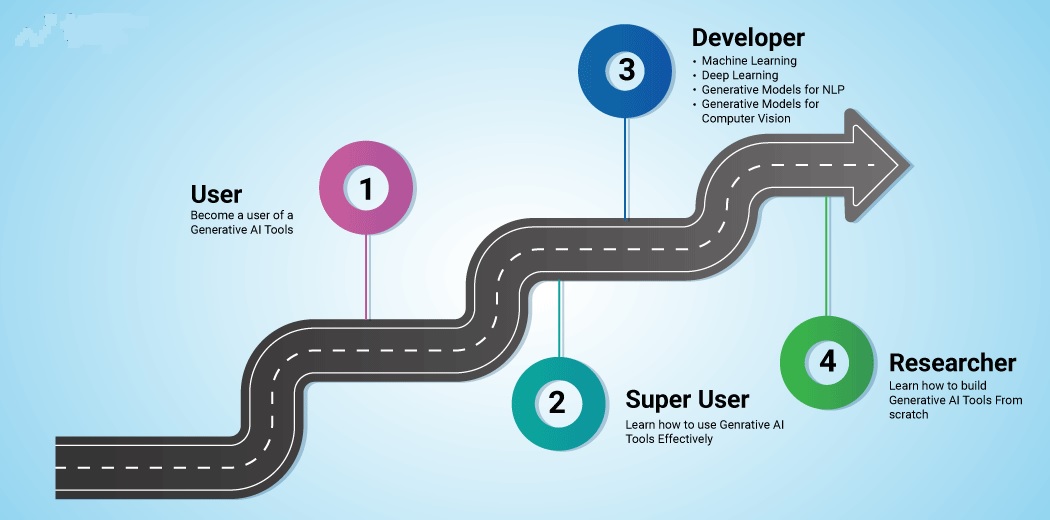Data Structures and Algorithms in Python: Are you ready to embark on an exciting journey into the world of artificial intelligence? Buckle up, because we’re about to dive deep into the heart of programming: data structures and algorithms.

Table of Contents
Why Data Structures and Algorithms Matter
As an aspiring AI engineer, understanding data structures and algorithms is like having a superpower. These concepts form the bedrock of efficient and elegant code. Whether you’re building recommendation systems, natural language processing models, or neural networks, a solid grasp of data structures and algorithms will set you apart from the crowd.
Let’s Get Started: Data Structures Basics
1. Arrays
Arrays are your trusty companions when it comes to storing a collection of elements. They’re like a neatly organized shelf where you can quickly grab what you need. In Python, lists serve as dynamic arrays, allowing you to add, remove, and modify elements effortlessly.
2. Linked Lists
Linked lists are the building blocks of more complex data structures. Imagine a chain of interconnected nodes, each pointing to the next. Mastering linked lists will enhance your understanding of memory management and traversal.
3. Hash Tables
Hash tables (or dictionaries in Python) are magical containers that allow lightning-fast lookups. They’re like having a personal assistant who instantly retrieves information based on a unique key. Learn how to harness their power efficiently.
4. Stacks and Queues
Stacks and queues are your backstage passes to handling data in a specific order. Stacks follow the “last in, first out” (LIFO) principle, while queues adhere to the “first in, first out” (FIFO) rule. These concepts are crucial for solving real-world problems.
Scaling Up: Advanced Data Structures
5. Trees
Trees are the architects of hierarchical relationships. From binary trees to AVL trees, understanding their properties and traversal techniques will prepare you for tackling tree-based algorithms.
6. Graphs
Graphs are the social networks of data structures. They connect nodes in intricate ways, representing relationships, networks, and dependencies. Dive into graph theory and explore algorithms like Dijkstra’s shortest path and depth-first search.
Algorithms: Your Secret Sauce
7. Binary Search
Imagine searching for a specific book in a massive library. Binary search is your librarian, efficiently narrowing down the possibilities by half with each step. It’s a fundamental algorithm that pops up everywhere.
8. Bubble Sort, Quick Sort, and Merge Sort
Sorting is like arranging a deck of cards. Bubble sort, quick sort, and merge sort are your card-shuffling techniques. Each has its quirks, and understanding their time complexity (Big O notation) is essential.
9. Recursion
Recursion is like a Russian nesting doll—it’s a problem-solving technique where a function calls itself. Mastering recursion unlocks elegant solutions to complex problems, whether you’re calculating Fibonacci numbers or exploring maze paths.
Conclusion
Congratulations! You’ve just completed the first leg of your AI engineer journey. Armed with data structures and algorithms, you’re ready to tackle any coding challenge that comes your way. Remember, practice makes perfect, so dive into coding exercises, participate in hackathons, and build cool projects. The AI world awaits your genius!
Online Learning Sources:
- GeeksforGeeks: Python Data Structures and Algorithms
- Jovian: Data Structures and Algorithms in Python
- Class Central: Data Structures and Algorithms in Python
- freeCodeCamp: Learn Algorithms and Data Structures in Python
- Data Structures Algorithms YouTube Playlist:
- Motivation: How Kaggle helped this person become ML engineer:
Assignments:
Finish all these exercises in this same playlist:
Frequently Asked Questions (FAQs) : AI Engineer Roadmap – Mastering Data Structures and Algorithms in Python
1. Why are data structures and algorithms important for aspiring AI engineers?
- Understanding data structures and algorithms is essential for AI engineers as these concepts form the foundation of efficient and elegant code. Whether you’re working on recommendation systems, natural language processing models, or neural networks, a strong grasp of data structures and algorithms will distinguish you in the field.
2. What are some basic data structures covered in the roadmap?
- The roadmap covers fundamental data structures such as arrays, linked lists, hash tables (dictionaries in Python), and stacks and queues. These structures are essential for storing, organizing, and manipulating data efficiently.
3. What advanced data structures are included in the roadmap?
- Advanced data structures explored in the roadmap include trees (binary trees, AVL trees) and graphs. Mastery of these structures is crucial for understanding hierarchical relationships and complex networks of data.
4. How are algorithms emphasized in the roadmap?
- The roadmap highlights various algorithms such as binary search, sorting algorithms (bubble sort, quick sort, merge sort), and recursion. These algorithms are indispensable for solving a wide range of problems efficiently.
5. How can I benefit from mastering recursion?
- Recursion is a problem-solving technique where a function calls itself. Mastering recursion enables you to devise elegant solutions to complex problems, such as calculating Fibonacci numbers or exploring maze paths.
6. What resources are recommended for learning data structures and algorithms in Python?
- Recommended resources for learning data structures and algorithms in Python include online platforms such as GeeksforGeeks, Jovian, Class Central, and freeCodeCamp. These platforms offer comprehensive courses and tutorials to aid your learning journey.
7. How can I practice and reinforce my understanding of data structures and algorithms?
- To reinforce learning, engage in coding exercises, participate in hackathons, and undertake projects that involve implementing data structures and algorithms. Practical application is key to mastering these concepts effectively.
8. What is the significance of Big O notation in understanding sorting algorithms?
- Big O notation is crucial for understanding the time complexity of sorting algorithms such as bubble sort, quick sort, and merge sort. It provides insights into algorithm efficiency and scalability, aiding in algorithm selection for different scenarios.
9. How can I stay updated with advancements in AI engineering and related fields?
- Stay updated by following reputable sources, attending conferences, joining online communities, and enrolling in advanced courses. Continuous learning and staying abreast of industry trends will ensure you remain competitive in the evolving field of AI engineering.
10. How does mastery of data structures and algorithms contribute to innovation in AI?
- Mastery of data structures and algorithms empowers AI engineers to develop innovative solutions, optimize performance, and tackle complex AI challenges more effectively. It serves as the backbone for building robust and scalable AI systems.

